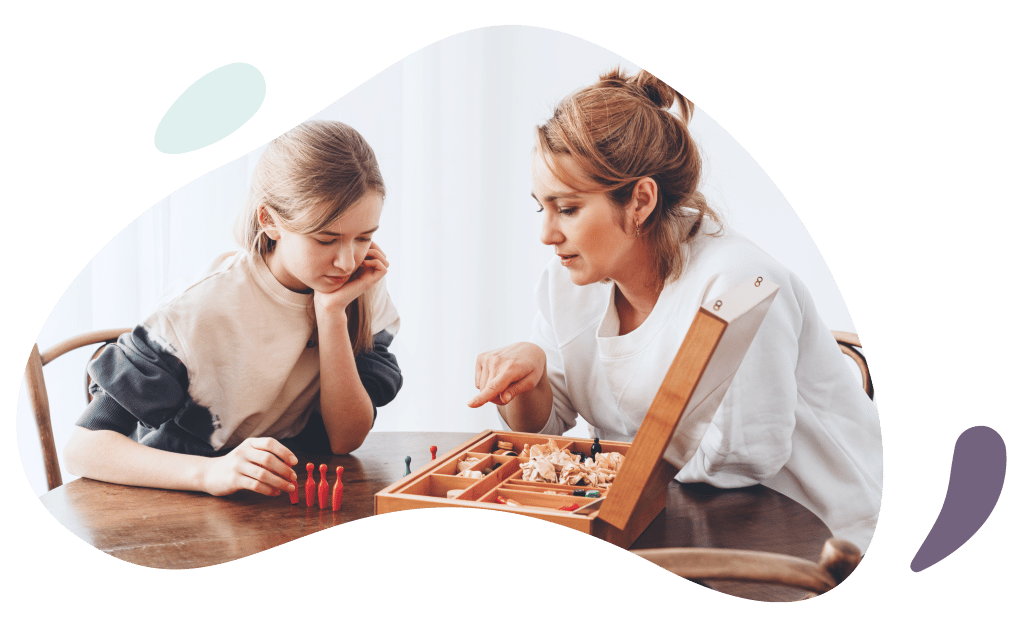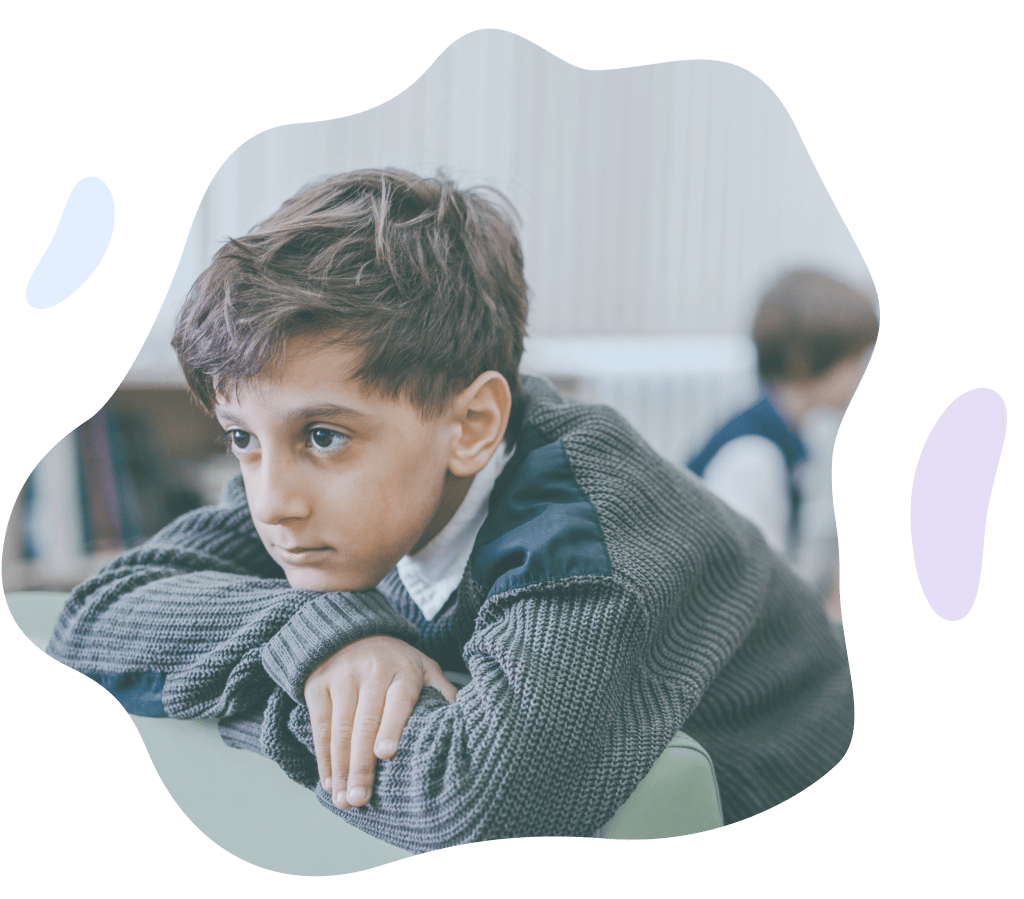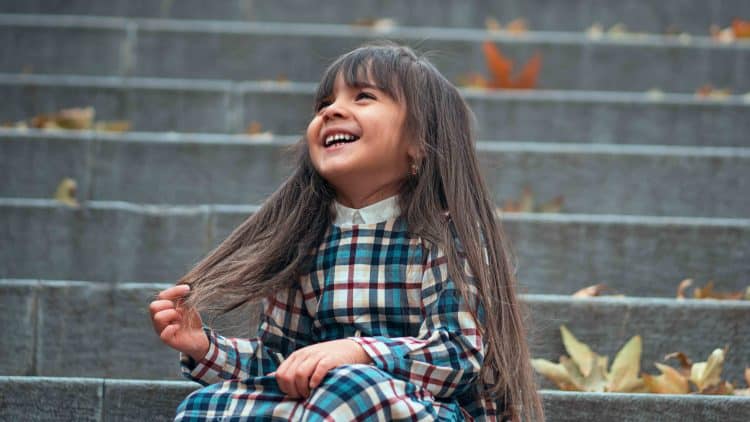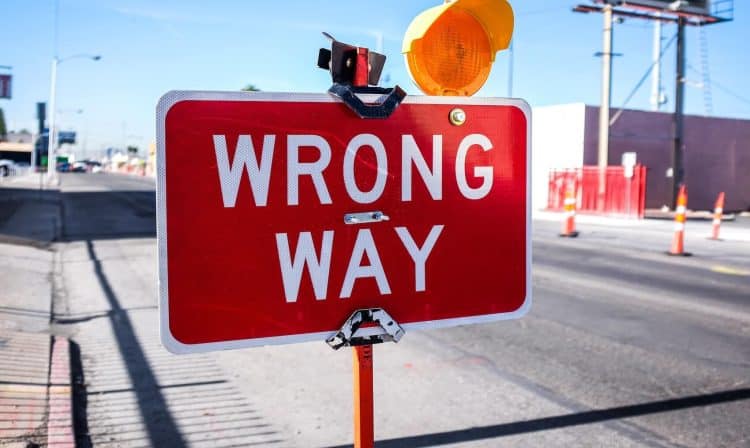The Impact of the Covid-19 Pandemic on Attachment

Published on September 29, 2022 Updated on June 14, 2023
In the years since the COVID-19 pandemic stormed into existence, it has claimed the lives of many of our loved ones, damaged economies, and changed how we navigate and relate to the world.
Even from an observational point of view, we can see how differently we all negotiated the regulations around the virus. Some of us got timely vaccinations, fastidiously washed our hands, wore masks, and kept a safe distance from the people we know. And others, well, they desired a quick return to normality, so were perhaps a little lax on these measures. But what drives these differences in how people cope/coped with the effects of COVID?
Of course, personality type has influenced our responses to the stress caused by the pandemic – particularly how conscientious someone may be, as well as peoples’ previous emotional and mental states. Yet, there has been a warranted surge of interest in how attachment styles may have mitigated psychological distress during the outbreak.
Chiefly, this interest has focused on the fact that COVID-19 was a taxing event that may have triggered trauma related to previous stressful events – such as from our early years. For this reason, it is thought that a secure attachment style may serve as a protective factor, akin to an “emotional immunity” against the distressing impact of the pandemic. Moreover, the stress of COVID may have enhanced the likelihood of caregivers’ attachment insecurities being transferred to their children. In light of this information, this article discusses:
- How our attachment styles may have affected our responses to the pandemic
- COVID-stress as a trauma reminder
- Secure attachment and COVID-stress
- Anxious attachment and COVID-stress
- Avoidant attachment and COVID-stress
- How COVID-19 might influence the development of insecure attachment
How Attachment Styles Affected Responses to COVID-19
The Historical Effect of Epidemics on Mental Health

Despite COVID-19 being such a recent event, the association between viral epidemics and psychological health has been an enduring one. In fact, the connection stretches back to more than 100 years ago. That’s when a researcher called Menninger noted that people displayed multiple mental health burdens after the 1918 Spanish Flu pandemic. Symptoms included extreme anxiety and fear after separation from their loved ones, as well as constraints on their freedom.
History has repeated itself since Menninger’s observations. Since very early on in its initial spread, the containment measures associated with the COVID-19 pandemic – including social isolation and distancing – have massively impacted daily life and negatively affected peoples’ psychological well-being. Currently, because we’re in the early aftermath of lockdowns, it is unknown how pervasive these effects may be.
The Stress of Covid-19 May Have Acted as a Trauma Reminder
COVID and attachment theory are inextricably linked, mainly because of how stressful situations activate our attachment systems. Those with a secure attachment style had available and attentive caregivers. As a result, they are adept at handling stress and its subsequent emotions in adulthood.
In contrast, those with an insecure attachment style perceived their caregivers to be unresponsive or unavailable. Consequently, they developed secondary attachment strategies – otherwise known as the “fight or flight” response. So, when faced with stressful events like the pandemic, insecure attachers may respond maladaptively. This is how they learned to cope with negative events as children.
Such an effect is known as a trauma reminder – a reminder of traumatic events from our past. Trauma reminders are also known as “triggers,” as they trigger an emotional response.
*Note – research around how the different attachment styles coped with the stress of the pandemic mostly centered around the secure, anxious, and avoidant attachment styles. This is because the disorganized attachment style vacillates between the traits of the anxious and avoidant styles. Try to be mindful of this when interpreting the anxious and avoidant responses to the pandemic.
The Secure Attachment Style and COVID Stress
As we’ve established in previous articles, people with a secure attachment style were shown consistent affection and validation as children. Thus, they typically have healthy levels of self-esteem and self-worth as well as established connections with others. As adults, secure attachers understand that they have the inner resources to cope with stressful events when faced with them. So, how was a secure attachment style beneficial during the pandemic?
1. Secure Attachers Were More Likely to Adhere to Regulations
By and large, the secure attachment style is associated with low stress patterns, low anxiety in relationships, and low avoidance patterns with loved ones. When this low pattern of stress is applied to the pandemic, it appears as though secure attachers were able to manage their fears and negative emotions more adaptively than insecure attachers.
Consequently, secure attachers demonstrated greater adherence to COVID guidelines (in comparison to those with an insecure attachment style). This may also help prevent long-term physical and mental health complications. This finding isn’t to suggest that secure attachers didn’t experience fear associated with themselves or their loved ones becoming ill. Rather, ir shows that they likely handled this stress in constructive ways.
2. Secure Attachers May Have Been More Optimistic During the Pandemic
Secure attachers display a healthy level of optimism when faced with stressful events. They trust that they can rely on their environment and the people in it to help them cope. Their strong sense of efficacy and self-worth bolsters a belief in the ability to face threats to their circumstances. This means that secure attachers likely believed in a positive outcome during the pandemic. Or at least they trusted that they would be able to cope with anything negative that came their way.
3. Secure Attachers Might Have Been More Comfortable With Isolation
A secure attacher’s level of confidence in their own company may have been a protective factor against the isolating effects of the pandemic. This isn’t to suggest that they don’t want or need the closeness of their loved ones. Rather, they are comfortable being alone with their own thoughts and feelings. When socially isolating in the company of others, they shared their feelings, trusted in others, and sought closeness from them.

The Anxious Attachment Style and COVID Stress
Due to the inconsistent patterns in how they were treated in their formative years, people with an anxious attachment style are likely to show increased behavioral, physiological, and emotional responses to even mildly stressful situations.
Anxious attachers also tend to lack a sense of permanence in their situation. They also feel a sense of helplessness when faced with stress. Due to these feelings of powerlessness, anxious attachers engage their “fight” response when their attachment traits are triggered by stress. In that case, they vigilantly search for reassurance and support – especially in their relationships. So, how does this pattern of behavior play out during a pandemic?
1. Anxious Attachers Exaggerated the Impact of the Pandemic

When faced with overwhelming stress, anxious attachers were likely to exaggerate how impactful the pandemic was on their lives. This isn’t to say that they didn’t actually feel every modicum of this stress. It’s just that they experienced it much more than people with the other attachment styles. Hence, they were predisposed to an intense fear of COVID-19. This unregulated level of alarm may have resulted in the anxious attacher struggling to balance their emotions and fear. This might have potentially compromised their mental and physical health indefinitely.
2. Anxious Attachers May Not Have Adhered to Regulations
Anxious attachers experience their fears more intensely than people with the other attachment styles. Therefore, they likely focused on how much the pandemic was negatively impacting their lives instead of adaptively responding to the threats of COVID. Consequently, they may have allowed themselves to become too overwhelmed by intense stress and fear. For instance, they may not have adhered to the set regulations around the pandemic. Instead, they might hVW responded passively to the rules and guidelines instead of actively following them. For example, due to an anxious attachers’ need for closeness to others, they may have failed to maintain social distance from their loved ones.
3. Anxious Attachers Struggled During Isolation
Another factor that may have predisposed anxious attachers to increased negative psychological impact during the pandemic may have been their need for closeness and approval from others – both of which would be stymied by social isolation.
Furthermore, for many individuals, a partner may have been the only social support available during isolation. Anxious attachers may have over-relied on their partner due to their “fight” response as a way to help them regulate their negative emotions during this challenging time. But they may have done so in maladaptive ways, which could have caused conflict and placed stress on the relationship. In turn, this response may have compromised an anxious attachers’ mental and physical health.
The Avoidant Attachment Style and COVID Stress
Avoidant attachers typically experienced patterns of rejection from their caregivers in their formative years. Therefore, in an attempt to protect themselves from distress, they engage their “flee” strategy by shutting down their attachment system and pushing down their negative feelings. These inclinations may make avoidant attachers less skilled at dealing with challenging situations. So, what does this mean both in the face, and the aftermath of, a global pandemic?
1. Avoidant Attachers May Have Experienced Increased Anxiety During Covid
In contrast to how anxious attachers feel helpless when faced with stressful life events, avoidant attachers may actually display a certain level of confidence in their ability to handle them – or at least when confronted with moderately stressful events. This level of confidence may be rooted in the fact that avoidant attachers tend to view others and their environment as unpredictable. Therefore, they feel like the only factor they should place trust in is themselves.
However, the more stressful the event, the more likely an avoidant attacher is to respond maladaptively. In such situations, their tendency to deny negative feelings, distance themselves, and limit their responses to threat may – in the long run – mean they experience increased anxiety in general. This increased anxiety was in addition to that which was already caused by the pandemic, such as job instability and the threat of illness.
2. Avoidant Attachers May Have Lacked Distress During Social Isolation

Interestingly, although avoidant attachers may have experienced increased anxiety, a psychological protective factor for them against the isolating effects of the pandemic may have been their discomfort with emotional closeness. Avoidant attachers tend to be the stereotypical “lone wolf.” They usually don’t become distressed when separated from the important people in their lives. They may even have seen isolation and social distancing measures in a positive light.
3. Avoidant Attachers’ Independence May Have Created Relational Conflict During Covid
If an avoidant attacher ended up isolating with a partner, the stress of the situation may have caused them to engage their “flee response” and shut down from their partner emotionally. This display of independence may have left their partner confused about where they stand. The avoidant attacher may have been the only person available to them for support during the pandemic. This might have created further feelings of isolation and potential conflict in the relationship.
4. Avoidant Attachers May Not Have Adhered to Regulations
The higher someone falls on the dimensions of attachment avoidance, the lower their levels of fear were around the pandemic. This may be to do with an avoidant attacher’s tendency to avoid close relationships and their reduced emotional responsivity to stressful events. Thus, avoidant attachers may have experienced lower levels of fear than the other attachment styles during the pandemic. However, this absence of fear may have resulted in a lack of compliance with COVID-19 guidelines, which could potentially have put avoidant individuals and their close ones at risk of both mental and physical ramifications.
How COVID-19 May Influence Attachment Styles in the Future
When facing COVID-19, a lot of attention was given to the role that our physiological immune system played in keeping us safe and protected in the long run. Yet the role of our emotional immune system was largely overlooked – and it can be strengthened (or damaged) by our close relationships.
Attachment styles are often inadvertently passed down from caregiver to child through actions and attitudes. Therefore, the influence of our attachment styles on our behaviors towards our children during the pandemic and associated lockdowns may have created a certain “vacuum” for the transgenerational transmission of insecure attachment. Possibly even creating a lasting effect on the population in general.
How Isolation May Have Impacted Childrens’ Attachment Styles
The increased amount of time that caregivers spent with their children during social isolation meant that their actions would have had a greater impact than usual. The child would otherwise have been in school or daycare. This extended duration of time wouldn’t be an issue if caregivers were balanced in regards to their actions and feelings. Yet, periods of isolation were stressful for most people.
In comparison to the relative emotional balance that people typically exhibited prior to isolation, both caregivers and children exhibited increased levels of negative emotions during isolation periods. This effect is likely due to the enhanced levels of distress that caregivers were experiencing. Regardless of a child’s age and gender, children adjust their emotions and actions in accordance with those of their caregivers. Moreover, a caregiver’s inability to manage their emotions adaptively during COVID-19 also impeded their capacity to sensitively attune to their child’s emotional difficulties – which, as we are aware, can lead to an insecure attachment style.
This effect has been confirmed through preliminary studies, especially with the avoidant and disorganized attachment styles. Although caregivers with the anxious attachment style were likely inhibited in their ability to soothe their children during this time, there aren’t any significant findings for how this attachment style may have impacted their childrens’ emotional development – yet.
Avoidant Caregivers’ Influence on Their Children During the Pandemic
Although caregivers with an avoidant attachment style likely experienced higher levels of negative emotions during isolation, they coped with this increase in a way that is in line with their attachment traits – by pushing their fears and anxiety down. In conjunction with their difficulties trusting and relying on others, avoidant caregivers typically have more distant relationships with their children. Therefore, children of avoidant caregivers usually try to disguise their true feelings, underestimate the extent of their distress, or outright deny that they experience negative emotions at all.

In fact, even when avoidant childrens’ caregivers gave in to their negative emotions, instead of mirroring these emotions like children usually do, the avoidant children still pushed down their corresponding negative feelings. So, even though children typically respond to the emotions of their caregivers by replicating them, the avoidant attachment style may override this tendency. This may have been protective to the mental health of these children during the pandemic – at least at times.
Despite the potential protective aspect of pushing down emotions, such children may have struggled with their fear and confusion both during and after the pandemic. This is because their true feelings weren’t acknowledged and dealt with in healthy ways – teaching them a maladaptive manner of coping in the long run.
Disorganized Caregivers’ Influence on Their Children During the Pandemic
In contrast to the avoidant attachment style, disorganized attachers usually retain a negative outlook on themselves, a high level of dependence on others, and more pessimistic emotions in general. Disorganized attachers expect others to rject them, so they both desire and reject emotional closeness – and this attitude applies to their children too.
In day-to-day life, these innate beliefs may manifest as paying a lot of attention to their children on occasion, but on others, being too absorbed in their own fears and anxieties to the extent of rejecting their childrens’ needs and emotions.
During the pandemic, disorganized caregivers struggled with their negative emotions more than usual. And their children responded by mirroring this increased unbalance.
Therefore, these children may not only have had to cope with the stress and demands of the pandemic, but also with their caregivers’ increased negative emotions and reactions – which likely only aggravated their own emotional burden.
Secure Caregivers’ Influence During the Pandemic
It is a rare occasion that we report a negative influence of caregivers’ secure attachment style on their children. However, during COVID-19, there were a lot of anomalies in behavior, and not even the secure attachment style was exempt.
Secure caregivers, by nature, have a close relationship with their children. This means that they are usually able to report on their childrens’ emotional state and needs accurately, and their children turn to them for reassurance and support. Yet, during the pandemic, secure attachers were facing the same enhanced fears and distress as everyone else. Due to secure attachers’ close relationship with their children, these children picked up on their caregivers’ emotional state and, in turn, may have displayed more negative emotions as a result.

Nevertheless, because secure caregivers typically dedicate a healthy amount of time to the development of their childrens’ emotional regulation skills, these increased levels of negative emotions were nowhere near as high as those of children of disorganized attachers. Even under the influence of a worldwide pandemic, children of secure attachers were relatively skilled at managing their emotions, suggesting less of an impact on their overall well-being in the long run.
Final Thoughts on Attachment and COVID-19
The long-term implications of COVID-19 on the mental health of people with insecure attachment styles need further investigation, as does the question of how the pandemic may have enhanced the transmission of insecure attachment styles. Yet, with the awareness that those of us with an insecure attachment style (and our children) are more prone to COVID’s negative psychological effects in its aftermath, there is no time like the present to take measures against further damaging collective effects.
We hope that the information provided in this article helps you to reach an understanding of how the pandemic may have impacted your mental health over the past number of years. Yet, if you need further support, then we encourage you to reach out to a professional for guidance. Knowledge and awareness are important, but they are not a substitute for treatment.
References
Levy, K., Ellison, W., Scott L., & Bernecker, S. (2011). Attachment style. Journal of Clinical Psychology, 67(2), 193–203.
Liang, Z., Delvecchio, E., Yucong, C., & Mazzeschi, C. (2021). Parent and Child’s Negative Emotions During Covid-19: The Moderating Role of Parental Attachment Style. Frontiers in Psychology, 15, 1-9.
Menninger, K. (1919). Psychoses Associated with Influenza: General Data:Statistical Analysis. JAMA, 72(4), 235–241.
Mikulincer, M., Florian, V., & Weller, A. (1993). Attachment styles, coping strategies, and posttraumatic psychological distress: The impact of the Gulf War in Israel. Journal of Personality and Social Psychology, 64(5), 817–826.
Mikulincer, M., & Florian, V. The relationship between adult attachment styles and emotional and cognitive reactions to stressful events. In: Simpson, J., & Rholes, W. (1998) Attachment theory and close relationships. The Guilford Press, 143–165.
Moccia, L., Janiri, D., Pepe, M., Dattoli, L., Molinaro, M., De Martin, V., & Di Nicola, M. (2020). Affective temperament, attachment style, and the psychological impact of the COVID-19 outbreak: An early report on the Italian general population. Brain, Behavior, and Immunity, 87,75–79.
Myers, S., & Wells, A. (2015). Early trauma, negative affect, and anxious attachment: The role of metacognition. Anxiety, Stress, & Coping, 28(6), 634–649.
Segal, S., Sharabany, R., Maaravi, Y. (2021). Policymakers as safe havens: The relationship between adult attachment style, COVID-19 fear, and regulation compliance. Personality and Individual Differences, 177, 110832.











 Get mental health tips straight to your inbox
Get mental health tips straight to your inbox








